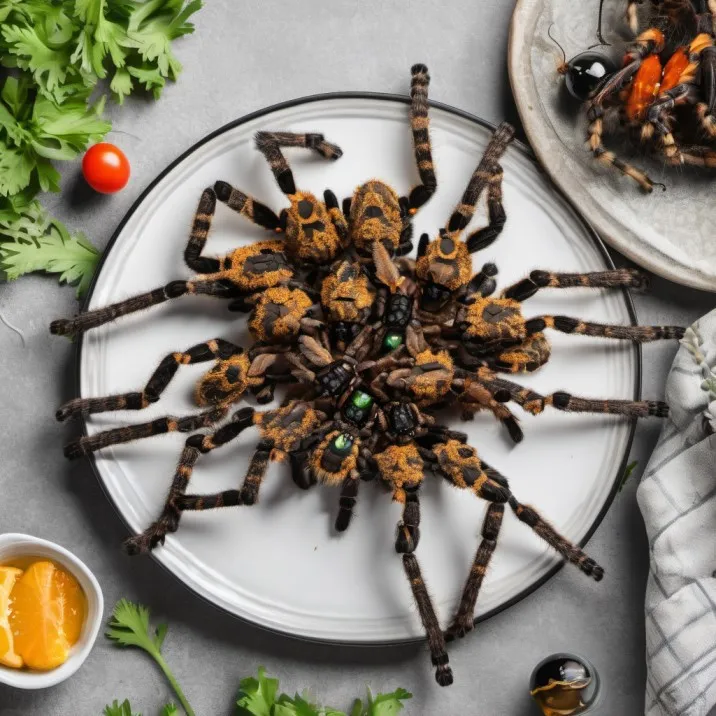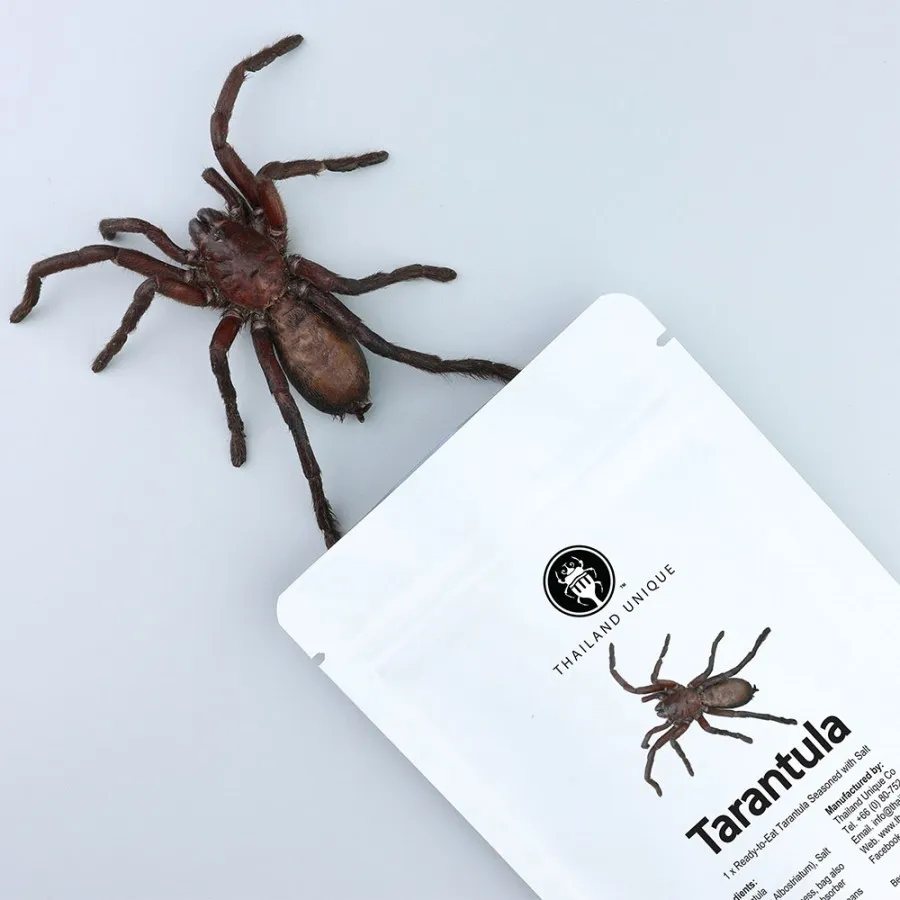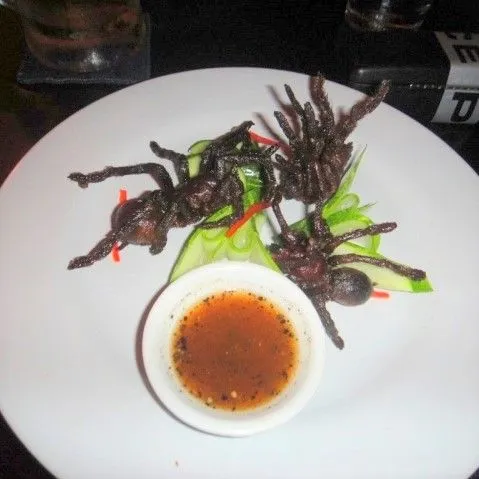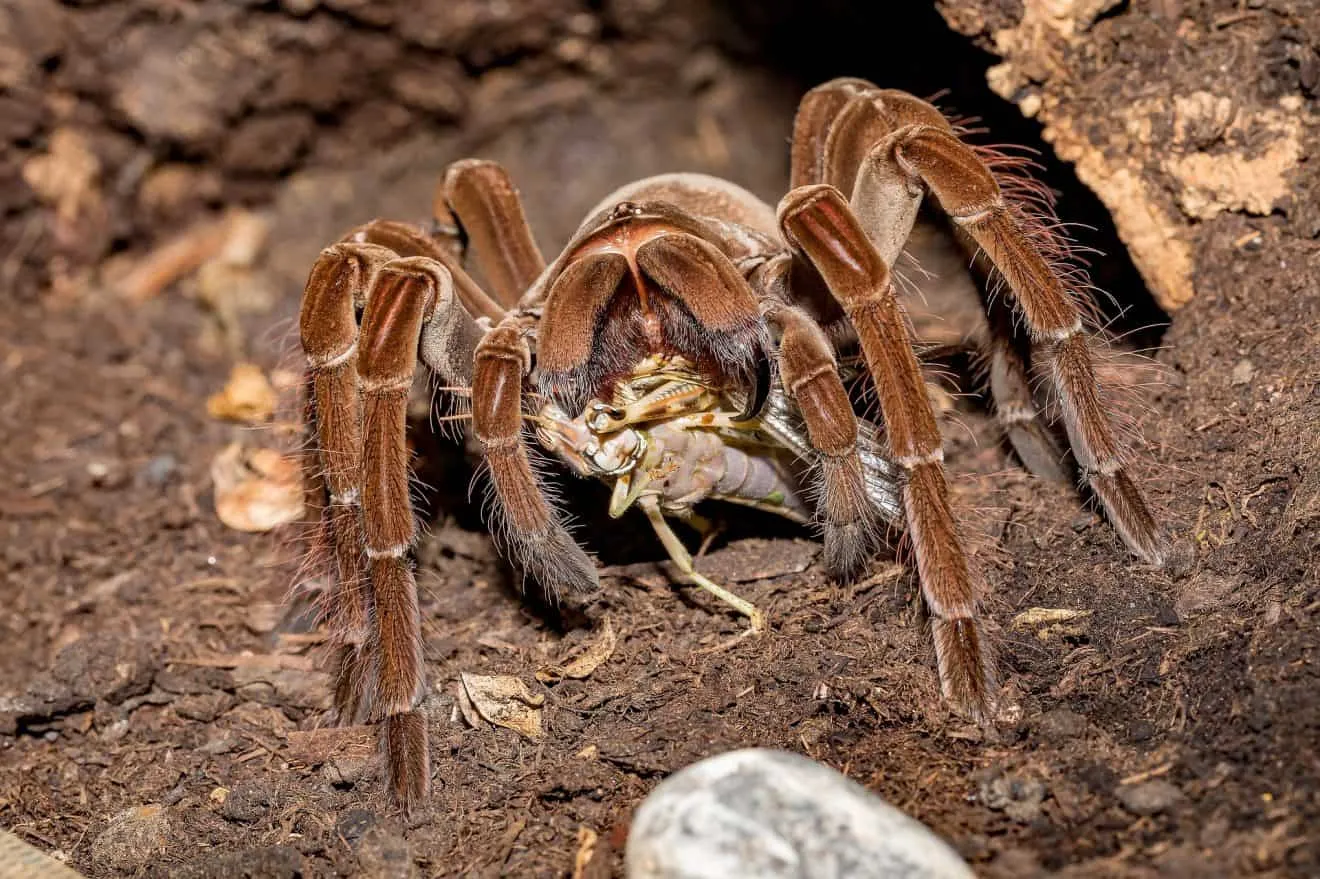What Do Tarantulas Taste Like An Overview
Venturing into the realm of exotic cuisine often leads to intriguing questions, and one of the most curious is undoubtedly, “What do tarantulas taste like?” For those with adventurous palates, the idea of consuming these large, hairy spiders might seem daunting. However, in many cultures, tarantulas are considered a delicacy, prepared and consumed with surprisingly diverse methods. Understanding the taste of a tarantula involves considering factors like texture, flavor profiles, preparation techniques, and even the specific species. The experience can vary from earthy and nutty to surprisingly mild, offering a unique culinary adventure for the brave. This guide delves into the various aspects of the tarantula taste, providing insights for those curious about this unconventional food source. Prepare to explore the fascinating world of tarantula consumption, uncovering the flavors and experiences that await the intrepid eater. Get ready to discover what makes this unusual dish a surprising treat.
Texture and Appearance
The texture of a cooked tarantula is a significant part of the eating experience. Generally, the body of a tarantula offers a combination of textures. The legs often become crispy and are compared to the texture of fried chicken skin or crab legs. The abdomen, on the other hand, tends to be softer and sometimes has a slightly mushy consistency, particularly if not prepared correctly. The exoskeleton provides a slight crunch, while the internal organs contribute to the overall texture. The size of the tarantula also plays a role larger specimens might have a more substantial texture. Preparing the tarantula well is essential to ensure a palatable texture. Overcooking can make the spider tough, while undercooking might leave it with an undesirable consistency. The overall texture is often considered part of the unique appeal of tarantula cuisine, offering a diverse sensory experience that sets it apart from more common foods.
Flavor Profiles Commonly Described

The flavor of tarantula is often described in terms of its earthiness, with many people noting a distinct connection to the spider’s natural habitat. The exact flavor profile can vary based on the species, its diet, and the cooking methods used. Common descriptions include an earthy taste, often with subtle nutty undertones, which is frequently compared to the flavor of shrimp or crab. The taste can also be surprisingly mild, with some people finding the overall experience quite pleasant. The flavor is also influenced by how the tarantula is prepared, as the cooking method can enhance certain aspects of its taste. Different seasonings and spices are also added which can mask the basic tarantula taste and gives a different experience. The flavor complexities make tarantulas a fascinating food for those seeking to explore new culinary horizons, and their diverse flavor profiles offer unique eating experiences.
Earthy and Nutty Notes
Many people who have eaten tarantulas describe their flavor as having earthy and nutty notes, which often form the base of the overall taste profile. This earthiness is likely derived from their diet, which consists of insects and other small creatures found in the soil. The nutty undertones add a layer of complexity, making the tarantula flavor more rich and satisfying. The intensity of these notes can vary. It also depends on the species and the cooking methods. Roasting or grilling tarantulas tends to accentuate these flavors, bringing out the natural earthiness and enhancing the nutty elements. The combination of earthy and nutty notes creates a unique flavor profile, which is why many people find tarantulas to be a flavorful and interesting food. These notes are a key element of the tarantula taste, adding to their appeal as a culinary experience.
Mild and Slightly Fishy
In addition to earthy and nutty notes, some people find that tarantulas have a mild and slightly fishy taste, particularly in certain species or when cooked in specific ways. This subtle fishiness can be attributed to the composition of the spider’s body, as well as its diet. The mildness of the flavor makes it an accessible food for those who may be hesitant about eating insects. The slightly fishy undertones can add an interesting layer to the taste, making the experience more complex. The cooking method can influence the perception of this fishiness as well. Frying or other methods can sometimes enhance this aspect, offering a unique flavor dimension. While not a dominant characteristic, the mild, slightly fishy taste adds to the overall experience, making tarantulas a unique culinary adventure.
Common Cooking Methods

The way a tarantula is cooked significantly impacts its final taste and texture. Different cooking methods are used in various cultures, each producing a unique culinary result. Methods, such as roasting, grilling, and deep-frying are used, each of which brings out different flavor profiles. The choice of cooking method often depends on regional traditions and the desired taste and texture. Proper preparation also involves removing the fangs and any potentially harmful parts of the tarantula before cooking. Understanding these various cooking methods is crucial for anyone considering tasting tarantulas. It also provides insight into how different culinary approaches affect the eating experience. Careful attention to preparation and cooking techniques ensures that tarantulas are safe to eat and provide a delightful culinary experience.
Roasting or Grilling
Roasting and grilling are popular cooking methods for tarantulas. These techniques help to enhance the natural flavors of the spider. Roasting involves cooking the tarantula in an oven, which often results in a crispy exterior and a tender interior. Grilling, on the other hand, exposes the tarantula directly to heat, giving it a smoky flavor. Both methods are effective at preserving the tarantula’s shape and texture, allowing it to retain its natural juices. When roasting or grilling tarantulas, it is important to season them appropriately to complement their earthy and nutty flavors. Simple seasonings like salt, pepper, and a touch of garlic can elevate the taste. Some cooks also add herbs or spices, depending on the desired flavor profile. These cooking methods are preferred for showcasing the natural flavors of the tarantula, making them a popular choice for culinary enthusiasts.
Deep Frying
Deep frying is another common method of preparing tarantulas, and this technique yields a crispy and crunchy texture. The spider is typically coated in a batter or seasoned flour before being submerged in hot oil. Deep frying creates a golden-brown exterior while keeping the inside juicy. This cooking method is particularly popular in cultures that consume tarantulas regularly. The deep frying process provides a satisfying crunch. It also helps to mask some of the more potent flavors, making it a more accessible option for those new to eating insects. The choice of oil and the type of batter can influence the final taste. The batter can be seasoned with spices, adding to the flavor of the tarantula. Deep frying is a great way to prepare this exotic dish. It provides a familiar texture and a unique taste experience for adventurous eaters.
Taste of Different Tarantula Species

The taste of tarantulas can vary significantly depending on the species. Different species have different diets and living environments, which contributes to their unique flavor profiles. Understanding these variations can help in appreciating the diversity of tarantula cuisine. Species like the Asian Giant Tarantula and the Brazilian Black Tarantula are commonly consumed. They offer distinct taste experiences. The flavor is also affected by factors such as the spider’s age, diet, and the preparation method used. Exploring these species provides an interesting perspective on how environmental and biological factors shape the culinary characteristics of tarantulas. By learning about the differences in taste and texture, you can expand your understanding of this exotic food.
The Asian Giant Tarantula
The Asian Giant Tarantula (also known as the Hainan Island bird eating spider) is known for its large size and is often a sought-after delicacy. Its flavor is often described as having a more pronounced earthy taste with a slightly nutty aftertaste. The meat is generally considered to be tender, and when cooked well, it can have a pleasant, almost chicken-like texture. This species is a popular choice in certain regions, where it is often grilled, roasted, or deep-fried. The Asian Giant Tarantula’s robust flavor and substantial size make it a satisfying option. This spider provides a unique eating experience, which is perfect for those looking to explore the world of exotic foods.
The Brazilian Black Tarantula
The Brazilian Black Tarantula is another species consumed in some cultures, known for its dark color and unique flavor. This tarantula often has a slightly milder taste compared to other species, with hints of earthiness and a subtle seafood-like undertone. The texture can vary depending on how it’s cooked, with the legs becoming crispy and the body offering a softer, more succulent experience. The Brazilian Black Tarantula is sometimes prepared by roasting or grilling. These methods help to bring out its natural flavors. The Brazilian Black Tarantula offers a different culinary experience, providing a milder and more accessible option for those curious about trying tarantulas.
Safety and Preparation Considerations

Consuming tarantulas involves several safety and preparation considerations. It is important to handle these spiders carefully to ensure they are safe to eat. Tarantulas have venomous fangs, and while their venom is not typically life-threatening to humans, they can cause pain and discomfort. When sourcing tarantulas for consumption, it is important to obtain them from reputable sources. Proper preparation includes removing the fangs to prevent any risk of a bite. Cooking the tarantula thoroughly is also essential to kill any potential parasites or bacteria. Learning about these safety measures is crucial for ensuring a positive and safe eating experience. It also helps minimize any potential health risks. Understanding the necessary precautions is essential for enjoying tarantulas responsibly.
Sourcing Tarantulas Responsibly
Sourcing tarantulas responsibly involves ensuring that the spiders are obtained from ethical and sustainable sources. It’s important to verify that the spiders are raised or harvested in a way that minimizes harm to their natural environment. Buying from reputable suppliers who follow humane practices is also very important. This includes providing proper care and handling of the tarantulas before they are processed for consumption. When you source responsibly, it supports sustainable practices and the well-being of these creatures. You also minimize environmental impact. Choosing ethically sourced tarantulas also supports the conservation efforts and the sustainable management of the species. Responsible sourcing is key to enjoying this exotic dish in a way that is both ethical and sustainable.
Allergies and Potential Risks
Consuming tarantulas carries potential risks and considerations. People with allergies to shellfish or crustaceans may experience allergic reactions to tarantulas, as they are both arthropods. It is important to be aware of these potential cross-reactivities before trying this food. Tarantulas, like any wild-caught food source, may carry parasites or bacteria if not properly prepared. Thorough cooking is necessary to eliminate any potential health hazards. It’s important to be cautious about the origin and preparation of the spiders to ensure food safety. Anyone considering trying tarantulas should be informed about these risks. Consult with a healthcare professional, particularly if you have known allergies or any health concerns. Always prioritize food safety and preparation to ensure a safe and enjoyable culinary experience.
Cultural Significance and Consumption

Tarantulas hold significant cultural importance and consumption is deeply rooted in various traditions around the world. In many cultures, these spiders are not just food, but also a part of the local cuisine. They are often prepared in unique ways, using traditional recipes passed down through generations. In some regions, tarantulas are considered a symbol of resourcefulness and resilience, providing a vital source of protein. The act of eating tarantulas can be tied to social gatherings. It also provides unique cultural experiences. The preparation, consumption, and even the sourcing of tarantulas can be a part of various cultural practices. Learning about the cultural significance of tarantulas gives deeper insights into their role. It also gives you the appreciation of food and local traditions.
